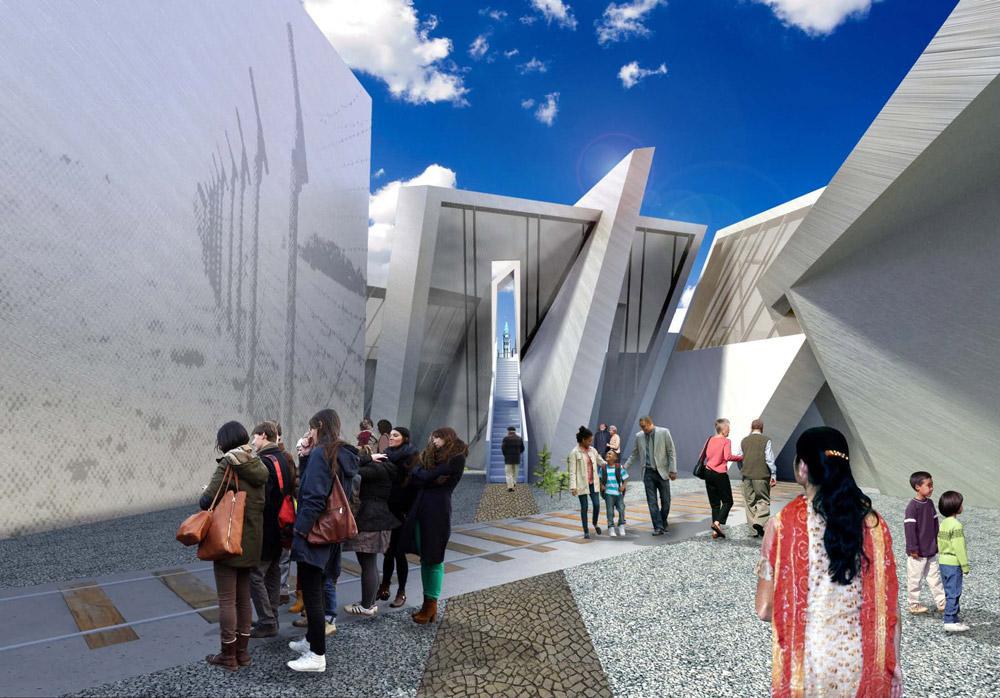Canadian photographer Edward Burtynsky and American architect Daniel Libeskind are part of a team that will create Canada’s first official National Holocaust Monument. The monument is due to be opened to the public in Ottawa in the fall of 2015.
Canadian Heritage minister Shelly Glover announced the winning proposal, which is led by Toronto’s Lord Cultural Resources, on Monday.
The monument will be Burtynsky’s first permanent public art project. He became involved in the project when approached by Lord Cultural.
“There is no one we would want more than Edward Burtynsky on our team,” says Lord Cultural principal consultant Dov Goldstein.
Goldstein says that from the outset, the Lord group wanted the monument to include both a sculptural and a photographic component.
On the sculptural side, the monument will be comprised of six triangular, concrete volumes configured to create the points of a star—a symbol that millions of Jews were forced to wear by the Nazis to identify them for discrimination and extermination. Triangles were also used to similarly mark homosexuals, Roma and other marginalized groups.
On the photographic front, the monument will feature original, large-scale photographic landscapes of Holocaust sites—death camps, killing fields and forests—embedded or etched into the concrete walls of each of the triangular spaces.
“Photography was a very important aspect of the Holocaust,” Goldstein says, “not only because the Nazis meticulously photographed and documented their heinous and horrible plans, but also because photography documented resistance for many Holocaust victims. [Victims] would take [photographs], bury them, hide them in shoes.”
To execute the project, Burtynsky will travel to Europe for a number of weeks this fall, photographing key Holocaust sites. When photographs are chosen upon return, they will be etched into concrete tiles in a manner Goldstein compares to “an intaglio process.”
Other members of the winning monument team include Quebec-based landscape architect Claude Cormier and University of Toronto Holocaust scholar Doris Bergen.
When completed, the monument will stand on a 0.79 acre site at the intersection of Wellington and Booth Streets within the historic LeBreton Flats in Ottawa, located across from the Canadian War Museum.
Lord Cultural’s proposal succeeded over five other groups that were finalists for the monument design, including teams that featured artists Krzysztof Wodiczko, Yael Bartana, Ron Arad and Esther Shalev-Gerz.









